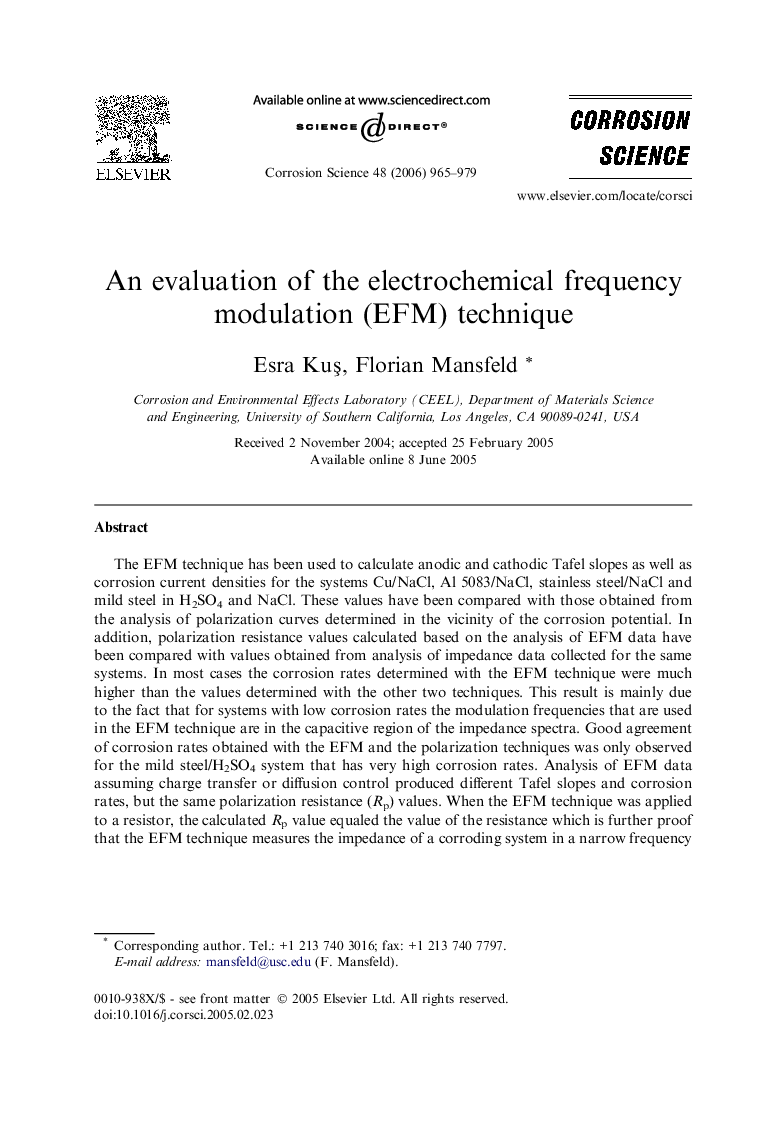| کد مقاله | کد نشریه | سال انتشار | مقاله انگلیسی | نسخه تمام متن |
|---|---|---|---|---|
| 1472401 | 990381 | 2006 | 15 صفحه PDF | دانلود رایگان |

The EFM technique has been used to calculate anodic and cathodic Tafel slopes as well as corrosion current densities for the systems Cu/NaCl, Al 5083/NaCl, stainless steel/NaCl and mild steel in H2SO4 and NaCl. These values have been compared with those obtained from the analysis of polarization curves determined in the vicinity of the corrosion potential. In addition, polarization resistance values calculated based on the analysis of EFM data have been compared with values obtained from analysis of impedance data collected for the same systems. In most cases the corrosion rates determined with the EFM technique were much higher than the values determined with the other two techniques. This result is mainly due to the fact that for systems with low corrosion rates the modulation frequencies that are used in the EFM technique are in the capacitive region of the impedance spectra. Good agreement of corrosion rates obtained with the EFM and the polarization techniques was only observed for the mild steel/H2SO4 system that has very high corrosion rates. Analysis of EFM data assuming charge transfer or diffusion control produced different Tafel slopes and corrosion rates, but the same polarization resistance (Rp) values. When the EFM technique was applied to a resistor, the calculated Rp value equaled the value of the resistance which is further proof that the EFM technique measures the impedance of a corroding system in a narrow frequency band. The difference to the traditional EIS technique is that the amplitude of the ac signal can be different at different frequencies.
Journal: Corrosion Science - Volume 48, Issue 4, April 2006, Pages 965–979